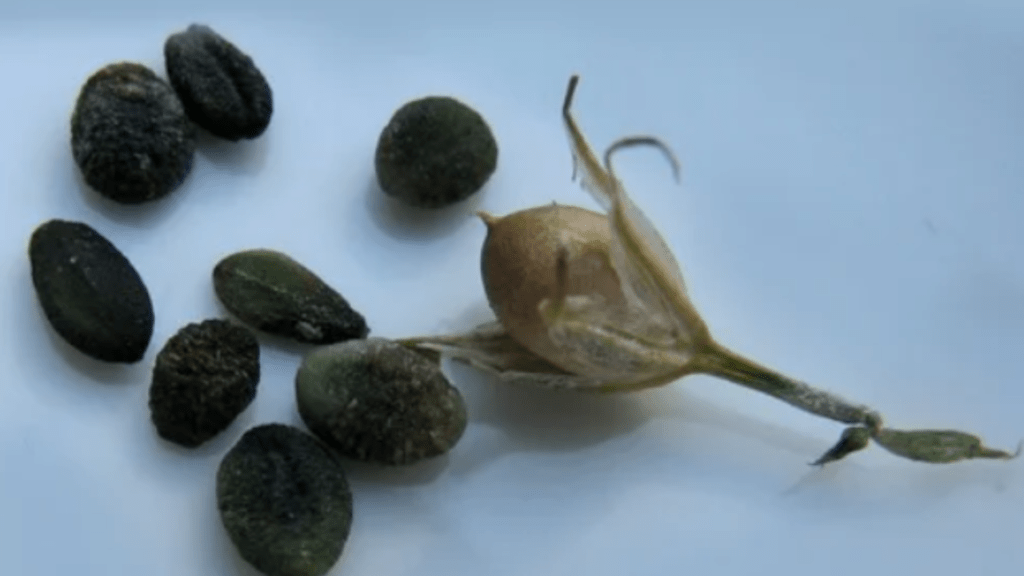
How to Grow Phlox Plant Seeds: A Step-by-Step Guide for a Beautiful Garden
Phlox plants are a beautiful addition to any garden, and growing them from seeds can be a rewarding experience. In this comprehensive guide, we will provide you with step-by-step instructions on how to grow phlox plant seeds, along with tips and techniques to help you create a stunning garden. Whether you’re a novice or experienced gardener, this article will provide you with the information you need to successfully grow phlox plants from seeds and enjoy a beautiful garden.
Phlox plants are a beautiful addition to any garden, and growing them from seeds can be a rewarding experience. In this comprehensive guide, we will provide you with step-by-step instructions on how to grow phlox plant seeds, along with tips and techniques to help you create a stunning garden. Whether you’re a novice or experienced gardener, this article will provide you with the information you need to successfully grow phlox plants from seeds and enjoy a beautiful garden.
To start, you will need to gather your materials, including phlox seeds, potting soil, and a container for planting. It’s important to choose a sunny location for your phlox plants, as they thrive in full sunlight. Once you have your materials ready, it’s time to plant the seeds.
First, fill your container with potting soil and sprinkle the phlox seeds on top of the soil. Gently press the seeds into the soil, but be sure not to bury them too deeply. Water the soil thoroughly, and place the container in a sunny location.
As the seeds begin to germinate and grow, it’s important to keep the soil consistently moist. Once the seedlings have developed their first set of true leaves, you can transplant them into your garden. Be sure to space the plants according to their specific variety’s requirements.
Throughout the growing season, be sure to water your phlox plants regularly and provide them with the necessary nutrients. With proper care, your phlox plants will reward you with beautiful blooms and vibrant colors.
Table of Contents
ToggleUnderstanding Phlox Plants
Phlox plants are beautiful and colorful flowers that can bring life to any garden. When planting phlox seeds, it’s important to gently press the seeds into the soil, being careful not to bury them too deeply. Keep the soil moist and place the container in a sunny location for optimal growth. Once the seedlings have developed their first set of true leaves, they can be transplanted into the garden, following the specific variety’s spacing requirements. Throughout the growing season, it’s important to water the plants regularly and provide them with the necessary nutrients. With proper care, your phlox plants will reward you with vibrant blooms and colors.
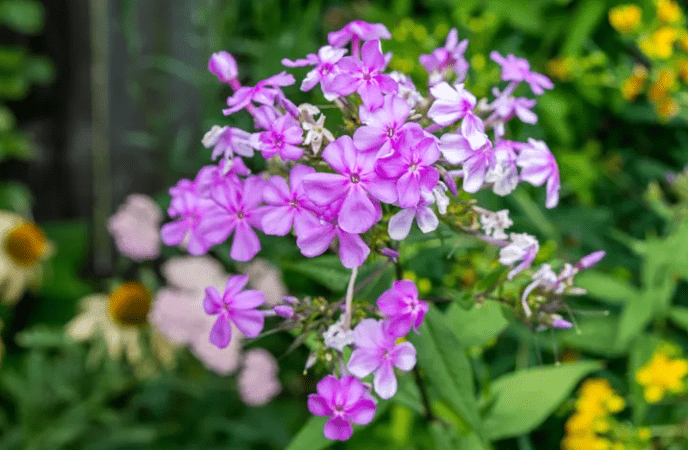
Describe the phlox plant, its characteristics, and varieties.
Phlox plants are a beautiful addition to any garden with their vibrant colors and fragrant blooms. They are easy to care for and can thrive in a variety of climates. Phlox plants come in a variety of colors including pink, purple, white, and red, and they can grow to be anywhere from 1 to 6 feet tall, depending on the variety. There are two main types of phlox plants: creeping phlox, which is a ground cover variety, and tall phlox, which grows upright and can be used as a border or in a flower bed. Creeping phlox is great for cascading over rock walls or in a rock garden, while tall phlox is perfect for adding height and color to a garden. These plants also attract butterflies and hummingbirds, adding even more beauty to your outdoor space. With proper care, phlox plants can bloom from late spring to early fall, providing long-lasting beauty in your garden.
Discuss the aesthetic appeal and uses of phlox in landscaping and gardening.
Phlox plants are a beautiful and versatile addition to any garden or landscaping project. Their vibrant colors and fragrant blooms make them a popular choice for adding visual appeal to outdoor spaces. They are also relatively easy to care for and can thrive in a variety of climates, making them a great option for gardeners of all skill levels. Phlox plants come in a wide range of colors, including pink, purple, white, and red, allowing for endless possibilities in creating a visually stunning garden. Additionally, they can vary in height, with some varieties growing to be as tall as 6 feet. This diversity in size and color makes it easy to incorporate phlox into many different types of landscaping designs.
There are two main types of phlox plants: creeping phlox, which is a ground cover variety, and tall phlox, which grows upright and can be used as a border or in a flower bed. Creeping phlox is great for cascading over rock walls or in a rock garden, while tall phlox is perfect for adding height and color to a garden. Both types of phlox can be used to create a stunning focal point in any outdoor space.
In addition to their aesthetic appeal, phlox plants also attract butterflies and hummingbirds, adding even more beauty and life to your garden. With proper care, phlox plants can bloom from late spring to early fall, providing long-lasting beauty in your outdoor space. Whether used as a border, ground cover, or focal point in a garden, phlox plants are a versatile and stunning addition to any landscaping or gardening project.
Benefits of Growing Phlox Plants from Seeds
Highlight the advantages of growing phlox plants from seeds versus buying pre-grown plants.
Growing phlox plants from seeds has several advantages compared to buying pre-grown plants. First, growing from seeds allows for a wider variety of phlox options, as there are numerous species and cultivars available in seed form. This diversity in size and color makes it easy to incorporate phlox into many different types of landscaping designs. Additionally, growing from seeds is more cost-effective than purchasing pre-grown plants, as seeds are typically less expensive and can yield a larger quantity of plants.
Furthermore, starting phlox plants from seeds allows for greater control over the growing process, from germination to maturity. This hands-on approach can be a rewarding experience for gardeners and allows them to closely monitor the growth and development of their phlox plants.
Overall, growing phlox plants from seeds offers a wider variety, cost savings, and a hands-on gardening experience, making it a favorable option for those looking to incorporate these beautiful plants into their outdoor space.
Mention the ecological benefits, cost-effectiveness, and the satisfaction of growing plants from seeds.
Growing phlox plants from seeds has numerous advantages that make it a worthwhile endeavor. First and foremost, it allows for a wider variety of phlox options, as there are many species and cultivars available in seed form. This diversity in size, color, and shape makes it easy to incorporate phlox into a wide range of landscaping designs. Additionally, growing from seeds is more cost-effective than purchasing pre-grown plants, as seeds are typically less expensive and can yield a larger quantity of plants. This not only saves money, but also allows for a greater number of plants to be grown and utilized in the garden. Furthermore, starting phlox plants from seeds provides greater control over the growing process, from germination to maturity. This hands-on approach can be a satisfying and rewarding experience for gardeners, as they can closely monitor the growth and development of their phlox plants. Additionally, growing plants from seeds is more environmentally friendly, as it reduces the need for transportation and packaging associated with pre-grown plants. Overall, growing phlox plants from seeds offers a wider variety, cost savings, and a hands-on gardening experience, making it a favorable option for those looking to incorporate these beautiful plants into their outdoor space.
Selecting the Right Phlox Plant Seeds
Provide tips on choosing high-quality phlox plant seeds.
When choosing high-quality phlox plant seeds, it’s important to look for reputable seed suppliers or nurseries that offer a wide variety of phlox seeds. Look for seeds that are fresh and properly stored to ensure viability. It’s also helpful to read reviews and recommendations from other gardeners to ensure the quality of the seeds. Additionally, consider the specific type of phlox plant you want to grow and choose seeds that are well-suited to your climate and growing conditions. Look for seeds that are labeled as organic or non-GMO if that is important to you. Finally, consider purchasing a few different varieties of phlox seeds to add diversity to your garden and landscaping designs. By following these tips, you can ensure that you’re selecting high-quality phlox plant seeds that will yield beautiful and healthy plants.
Discuss where to buy phlox plant seeds (online stores, nurseries, etc.).
When looking to purchase phlox plant seeds, there are several options to consider. Online stores such as Amazon, Etsy, and eBay offer a wide variety of phlox seeds that can be conveniently ordered and delivered directly to your home. Many reputable seed suppliers and nurseries also offer phlox seeds, and it’s often helpful to visit these locations in person to ensure the quality and freshness of the seeds. Additionally, consider local gardening centers or plant sales, as they may carry a selection of phlox seeds as well. When purchasing phlox seeds, it’s important to look for reputable suppliers that offer a wide variety of phlox seeds and are known for their high-quality products. Be sure to read reviews and recommendations from other gardeners to ensure the quality and viability of the seeds. It’s also important to consider the specific type of phlox plant you want to grow and choose seeds that are well-suited to your climate and growing conditions. Look for seeds that are labeled as organic or non-GMO if that is important to you. Finally, consider purchasing a few different varieties of phlox seeds to add diversity to your garden and landscaping designs. By following these tips, you can ensure that you’re selecting high-quality phlox plant seeds that will yield beautiful and healthy plants.
Preparing for Planting
Detail the steps to prepare the soil and planting area for phlox seeds.
To prepare the soil and planting area for phlox seeds, start by selecting a location that receives full sun or partial shade, as phlox plants thrive in these conditions. Clear the area of any weeds or debris and work the soil to a depth of about 12 inches. Incorporate compost or organic matter into the soil to improve its fertility and drainage.
Next, sow the phlox seeds directly into the prepared soil, ensuring that the seeds are spaced according to the instructions on the seed packet. Gently press the seeds into the soil and water the area thoroughly. Keep the soil consistently moist, but not waterlogged, until the seeds germinate and the seedlings establish themselves.
It’s also important to provide support for taller varieties of phlox, such as staking or trellising, to prevent them from falling over as they grow. Additionally, consider mulching around the base of the plants to help retain moisture and suppress weed growth.
By following these steps, you can prepare the soil and planting area for phlox seeds and set the stage for successful growth and blooming of your phlox plants.
Explain the importance of soil quality, drainage, and sunlight.
Soil quality, drainage, and sunlight are all crucial factors to consider when it comes to planting and maintaining a successful garden. The quality of the soil directly impacts the fertility and health of your plants, so it’s important to incorporate compost or organic matter into the soil to improve its fertility and drainage. This will provide the necessary nutrients for the plants to grow and thrive. Additionally, proper drainage is essential to prevent waterlogging and root rot, so be sure to choose a well-draining planting location or consider adding raised beds if drainage is an issue.
In terms of sunlight, most plants require adequate sunlight to carry out the process of photosynthesis, which is essential for their growth and development. Before planting, it’s important to assess the amount of sunlight the planting area receives throughout the day and choose plant varieties that are suitable for the light conditions. For example, sun-loving plants should be placed in areas that receive full sunlight, while shade-loving plants should be placed in areas with partial or full shade.
Overall, by paying attention to the quality of the soil, ensuring proper drainage, and providing adequate sunlight, you can create the optimal growing conditions for your plants and set the stage for a successful garden.
Planting Phlox Seeds
Step-by-step guide on how to plant phlox seeds.
Planting phlox seeds is a simple process that can result in beautiful, colorful flowers in your garden. First, choose a location with well-draining soil and full sunlight, as phlox plants thrive in these conditions. Prepare the soil by adding compost or organic matter to improve fertility and drainage. Once the soil is prepared, scatter the phlox seeds over the planting area and lightly press them into the soil. Water the seeds gently to ensure the soil is moist, but not waterlogged. Keep the soil consistently moist until the seeds germinate and the plants begin to grow. It’s important to thin out the seedlings once they start growing to ensure proper spacing and prevent overcrowding. With proper care and attention, your phlox seeds will soon sprout and grow into beautiful, vibrant flowers that will enhance the beauty of your garden.
Tips on spacing, depth, and watering during the initial planting phase.
When planting phlox seeds, it’s important to consider spacing, depth, and watering to ensure successful growth. First, choose a location with well-draining soil and full sunlight, as phlox plants thrive in these conditions. Prepare the soil by adding compost or organic matter to improve fertility and drainage. Once the soil is prepared, scatter the phlox seeds over the planting area and lightly press them into the soil. Water the seeds gently to ensure the soil is moist, but not waterlogged. Keep the soil consistently moist until the seeds germinate and the plants begin to grow.
It’s important to thin out the seedlings once they start growing to ensure proper spacing and prevent overcrowding. This will allow the plants to receive adequate sunlight and nutrients, promoting healthy growth. Additionally, maintaining proper spacing will help prevent the spread of disease and ensure good air circulation around the plants.
When watering the phlox plants, it’s important to water at the base of the plant to prevent moisture on the leaves, which can lead to disease. Water deeply but infrequently to encourage deep root growth and drought tolerance. It’s best to water in the morning to allow the foliage to dry during the day, reducing the risk of disease.
With proper care and attention to spacing, depth, and watering, your phlox seeds will soon sprout and grow into beautiful, vibrant flowers that will enhance the beauty of your garden.
Caring for Phlox Plants
Detailed care guide including watering, fertilizing, and pest control.
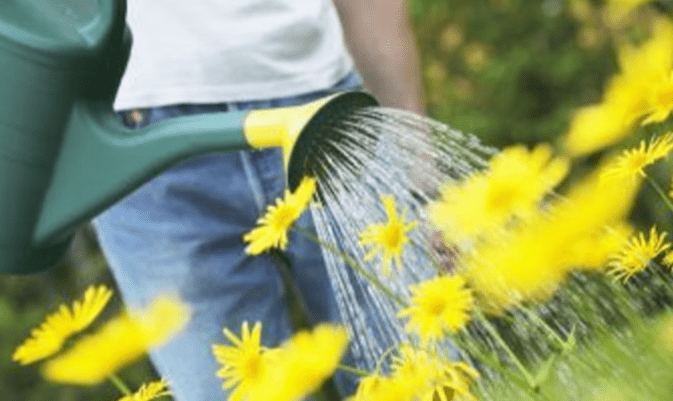
Caring for phlox plants involves several key steps to ensure they thrive and produce beautiful, vibrant flowers. When it comes to watering, it’s important to water at the base of the plant to prevent moisture on the leaves, which can lead to disease. Water deeply but infrequently to encourage deep root growth and drought tolerance. It’s best to water in the morning to allow the foliage to dry during the day, reducing the risk of disease.
In terms of fertilizing, consider using a balanced fertilizer in the spring to promote healthy growth and vibrant blooms. Follow the instructions on the fertilizer package and avoid over-fertilizing, as this can lead to excessive foliage at the expense of flowers.
Pest control is also important to keep your phlox plants healthy. Keep an eye out for common pests such as aphids and spider mites, and use an organic insecticidal soap to control these pests if necessary. Additionally, it’s important to thin out the seedlings once they start growing to ensure proper spacing and prevent overcrowding. This will allow the plants to receive adequate sunlight and nutrients, promoting healthy growth. Maintaining proper spacing will also help prevent the spread of disease and ensure good air circulation around the plants.
By following these care guidelines, you can ensure that your phlox plants grow and thrive, producing stunning flowers that will enhance the beauty of your garden.
Tips on pruning and maintaining the health of phlox plants.
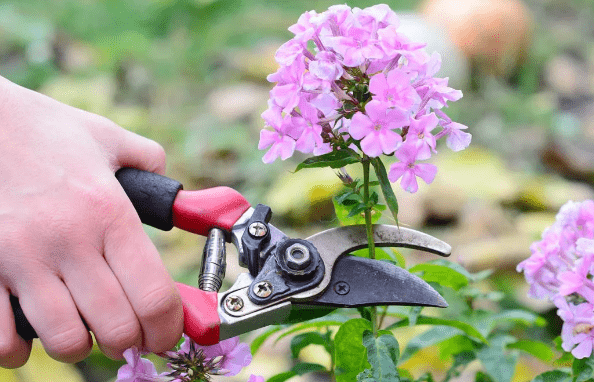
Pruning and maintaining the health of phlox plants is essential for their growth and blooming. When it comes to fertilizer, it’s important to follow the instructions on the package and avoid over-fertilizing, as this can lead to excessive foliage at the expense of flowers. Additionally, pest control is crucial for keeping phlox plants healthy. Keep an eye out for common pests such as aphids and spider mites, and use an organic insecticidal soap to control these pests if necessary.
Another important aspect of maintaining phlox plants is to thin out the seedlings once they start growing. This ensures proper spacing and prevents overcrowding, allowing the plants to receive adequate sunlight and nutrients for healthy growth. Proper spacing also helps prevent the spread of disease and ensures good air circulation around the plants.
By following these care guidelines, you can ensure that your phlox plants grow and thrive, producing stunning flowers that will enhance the beauty of your garden. Taking care of your phlox plants will result in a beautiful and healthy garden for you to enjoy.
Common issues and how to address them, such as diseases and pests.
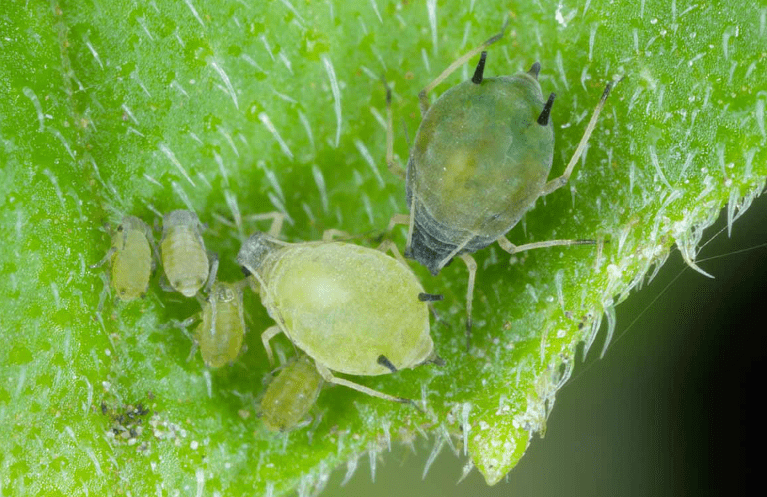
When it comes to phlox plants, it is important to address common issues such as diseases and pests. One common pest to watch out for is aphids, which can be controlled using organic insecticidal soap. Another pest to be mindful of is spider mites, which can also be controlled with the use of organic insecticidal soap. It is important to regularly inspect your phlox plants for signs of pests and to take action promptly to prevent damage to the plants. Additionally, it is important to thin out the seedlings as they start growing to ensure proper spacing and prevent overcrowding. This allows the plants to receive adequate sunlight and nutrients for healthy growth, while also preventing the spread of disease and allowing for good air circulation around the plants. By following these care guidelines and addressing common issues such as diseases and pests, you can ensure that your phlox plants grow and thrive, producing stunning flowers that will enhance the beauty of your garden.
Harvesting Phlox Seeds
Is a simple yet important task in maintaining a healthy and vibrant garden. To start, wait until the phlox flowers have faded and the seeds have formed. You can tell when the seeds are ready to be harvested when the seed heads turn brown and dry. Use scissors or pruners to carefully cut the seed heads off the plant and place them in a paper bag. Allow the seed heads to dry in the bag for a few weeks, shaking the bag occasionally to ensure the seeds are fully dried. Once dry, gently crush the seed heads to release the seeds from the pods. Then, sift through the crushed seed heads to separate the seeds from any remaining plant debris. Store the seeds in a cool, dry place in an airtight container until you are ready to plant them. By following these steps, you can ensure a successful harvest of phlox seeds to use in your garden or share with others.
Extracting and Saving Phlox Plant Seeds
Is a simple process that can help you grow beautiful phlox plants in your garden. When the seed heads of the phlox plant turn brown and dry, it’s time to harvest the seeds. Use scissors or pruners to carefully cut the seed heads off the plant and place them in a paper bag. Allow the seed heads to dry in the bag for a few weeks, shaking the bag occasionally to ensure the seeds are fully dried. Once dry, gently crush the seed heads to release the seeds from the pods. Then, sift through the crushed seed heads to separate the seeds from any remaining plant debris.
Store the seeds in a cool, dry place in an airtight container until you are ready to plant them. This will help to ensure the seeds remain viable and ready for planting in the future. By following these steps, you can ensure a successful harvest of phlox seeds to use in your garden or share with others. Saving seeds from your favorite phlox plants is a great way to continue enjoying their beauty year after year.
Common Problems and Solutions
If you are experiencing common problems with your phlox plants, there are some simple solutions you can try. If your plants are not producing flowers, it may be due to inadequate sunlight or improper pruning. Make sure your plants are getting at least 6 hours of sunlight per day and prune them to encourage new growth and flowering. If your phlox plants are being attacked by pests, try using natural remedies such as neem oil or insecticidal soap to control the infestation. Additionally, if your plants are wilting or showing signs of disease, make sure they are not being overwatered and consider removing any affected foliage to prevent the spread of disease. By addressing these common problems with your phlox plants, you can help ensure they thrive and continue to add beauty to your garden.
In conclusion, growing phlox plant seeds can be a rewarding and enjoyable experience for any gardener. By following the step-by-step guide and incorporating the tips provided, you can create a beautiful garden filled with stunning phlox flowers. Remember to be patient and attentive to the needs of your plants, and you will be rewarded with a garden that will bring joy and beauty to your outdoor space.
Frequently asked questions And Answer
The best time to plant phlox seeds is in the early spring, after the last frost has passed.
Prepare the soil by loosening it with a garden fork or tiller and removing any weeds or debris. Mix in some compost or fertilizer to provide nutrients for the seeds.
Plant the phlox seeds no more than 1/8 inch deep in the soil.
Keep the soil consistently moist but not waterlogged. Water the seeds gently with a watering can or hose sprayer.
Phlox seeds typically take about 10-20 days to germinate, but it can vary depending on the conditions.
Phlox plants thrive in full sun to partial shade, so make sure to plant them in an area that receives at least 6 hours of sunlight per day.
Once the phlox seedlings have grown to about 2-3 inches tall, you can thin them out by gently pulling out the weaker seedlings, leaving the strongest ones to grow.
Water the mature phlox plants regularly, especially during dry periods, and fertilize them once a year in the spring. Deadhead the flowers to encourage new blooms and divide the plants every 3-4 years to prevent overcrowding.
